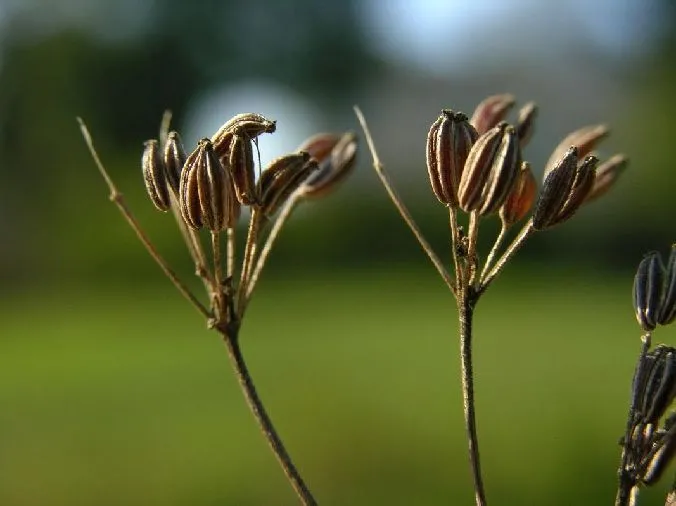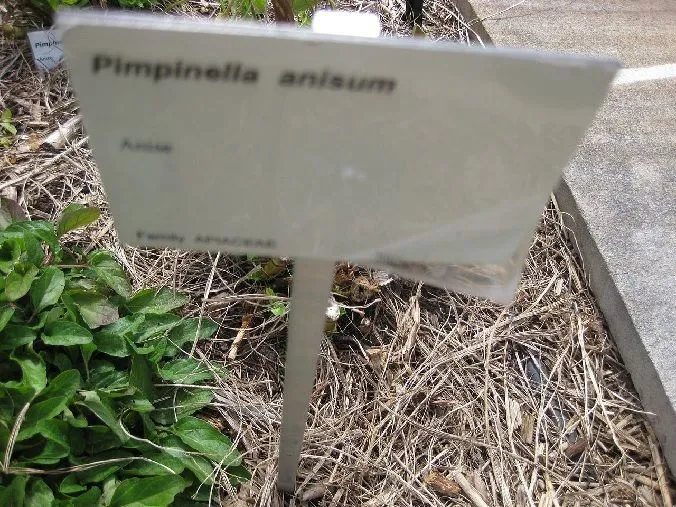Our intention is, given the name of this blog, to touch all the sticks within the family of medicinal plants or aromatic. Therefore, what better honor than to dedicate an article to anise.
Anise? The first thing that comes to mind is the liquor that every well-known bar has and that is usually taken more frequently by “the elderly” (if you are young and you like anise, do not take us into account 🙂). However, what not everyone stops to think about is where the aniseed flavor, brandy, anise oil or curry comes from. Exactly, all this is produced Pimpinella anisum. Do we grow it?
Table of Contents
The family Apiaceae
Everything in botany is related, and therefore, that the taste of the edible stems of Pimpinella anisum resemble that of celery is, nothing more and nothing less, because these two plants belong to the same family, Apiaceae.
As we most often hear this family is the common term: apiaceae. From this family you also find other well-known crops such as carrotthe parsley, fenneletc. Of these last three mentions, they will have a place in medicinal plants both fennel and parsley. In a while we will see them around here. 🙂
The origin of anise (Pimpinella anisum) is, like many other plants, Asian. However, it is also known that there were crops of this plant in the eastern part of the Mediterranean basin.
NOTE:
Not to be confused with star anise (Illicium verum) for it is not the same as the anise of bread (Pimpinella anisum). In the first case it is usually used more to make teas, some French liqueurs or in pastries.

We go to the garden to grow anise
We get down to work and prepare our garden to grow this aromatic plant. For this we will need the following conditions:
Soil
We are going to have problems with respect to the soil of our garden. When preparing it, we will grind it with energy (this means that we will need to have a deep soil) and with it we will increase its permeability and forget about water stagnation and bad drainage.
Climate
For the cultivation of anise (Pimpinella anisum), we need a temperate climate or warm climate. Basically we look for a climatic zone where there are high temperatures in summer, environmental dryness (low rainfall) and good lighting.
With regard to the latter, light, we have to ensure that the area where we plant it does not have shade from other larger crops, usually trees of great foliage density.
One more thing to keep in mind is the theme of the wind. The area where we grow it must be protected from the action of strong winds, because anise is a plant that is accustomed to bedding (lying down), such as some cereals. If this occurs, the quality of the harvest (not to mention the harvest) will be significantly affected.
Irrigation
We start from the fact that, in a traditional way and in large extensions, anise is watered with a blanket. We, who seek efficiency in our garden, can put so much drip irrigation how irrigation by exudation (if you don’t know what it’s about, someday we’ll tell you about it).
It is important that the soil or substrate is moist at the time of planting. This will greatly increase germination statistics.
The irrigations will depend on the state of the crop, and we must look at the drainage capacity of the soil. We will create a wet bulb with the drip system that covers the entire set of plants, and we will maintain this humidity at all times.
Fertilization
It is important to keep anise fertilized, especially in times of growth and production. Nitrogen is a very important mineral to apply in the early stages of cultivation, although it must be fertilized with this element in the flowering season or during the curd.
With In this regard, it must be said that the organic matter applied a few months before cultivation benefits the development of the crop, and completes the needs of anise fertilizer (Pimpinella anisum).
Planting anise
When planting anise we can do it by establishing cultivation lines, so that both irrigation and fertilization will be done more efficiently. To do this, we must keep a recommended planting frame of between 50 and 70 cm of space between lines.
To ensure that germination is successful, apart from the fact that the seeds must have a high germinative power, the soil must be between 20 and 25 º C on average, either in the final place where we are going to sow or inside our house, in Seed or Pots.
If, everything is going well, in a week or week and a half we will begin to see the plant resurface from the substrate. This will indicate that we are on the right track. 🙂
Multiplication of Pimpinella anisum
Although you can also start germinating in prepared seedbeds (be careful, since its transplantation can be complicated), the most comfortable and ideal is to carry out a direct sowing in the garden or field.
It is usually done when temperatures begin to be mild, in early spring, being an important requirement to maintain soil moisture (temperature) at all times, as it is crucial to save a high percentage of germination.
In a matter of 120 days (about 4 months) we can enjoy its harvest and conservation of the anise seeds (between July and September).
You’ll know it’s time to collect your seeds when the plant starts to dry. You can see how the shoots begin to turn yellow, the seed hardens.
Once collected the parts that interest us from Pimpinella anisum, the ideal is to put them to dry in bunches dry and ventilated places for several days. Later, its conservation will be done in moisture-free packaging.
Some pests to watch out for
In general, most medicinal plants do not usually present serious problems of pests and diseases. Many of them have bactericidal action, pest repellent and inhibitors in the development of fungal mycelia. However, there are some pests that can make an appearance:
- Thrips
- Caterpillars
- Aphids
- Mites
As for fungi, they can attack anise both Rhizoctonia how Fusarium although in isolation and when there is a lot of humidity.

Properties of bread anise
Among all the medicinal uses attributed to anise, its digestive properties stand out, as it improves appetite, helps curb colic, reduces nausea and flatulence and, in general, has a protective effect on the stomach.
However Pimpinella anisum has a neurotoxic that can become harmful to humans under high intake conditions. Therefore, its use in the feeding of newborns is rejected.
1 or 2 cups a day of anise usually produce beneficial effects for the digestive system. It can be combined together with the caraway seeds to achieve a greater effect.
The active substances of Pimpinella anisum
Among the principles to highlight of anise is the essential oil (anethole) containing its seeds. It is used as a resource to combat flatulent colic and all kinds of digestive disorders.
On the other hand, there are more compounds apart from anethole, such as:
- Anise aldehyde
- Aniseic acid
- Terpene
- Chavicol methylene
Buy Pimpinella anisum seeds
Luckily, anise is usually a well-known plant and, therefore, sachets prepared with seeds of this plant are usually sold a lot. Its cost is low, around € 1.5-2 per envelope (normal, in most vegetables, vegetables and medicinal plants), and they usually include around 250 seeds that germinate within 20 days of planting.
